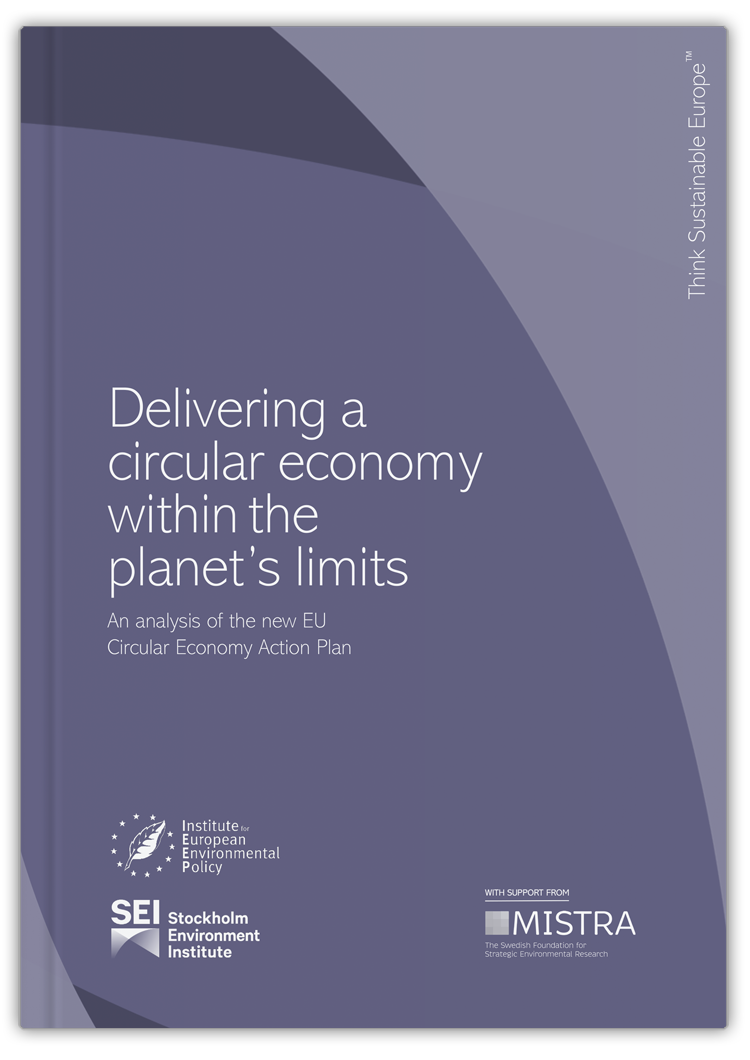Author: Mats Engström is an associate researcher at IEEP
Ursula von der Leyen and her Commission have taken important steps to green the European economy and simultaneously promote competitiveness as part of the European Green Deal. The communication on a new industrial strategy is one more significant policy initiative.
| In brief:There are many positive elements in the European Commission’s communication on a ‘New Industrial Strategy for Europe‘, such as strengthening strategic value chains for low-carbon technologies, promoting sustainable mobility and circular economy.However, more focus has to be put on sustainable consumption and more details need to be added on, for example, how digitalisation can contribute to climate-neutrality. |
Transition to a climate-neutral Europe by 2050 is a key aim of the communication, with important statements on inter alia strategic value chains for low-carbon technologies, enabling infrastructure, sustainable mobility and circular economy. The Clean Hydrogen Alliance followed by Alliances on Low-Carbon Industries can become flagship European projects.
Still, some aspects are lacking or could be more strongly emphasised during the deliberations in the European Parliament and the Council – including on natural resource consumption.
Reducing consumption (or in some cases slowing the growth of consumption) should not be taboo.
Even if green transitions of industrial production are successful to a large extent, there will still be negative environmental impacts from resource use.
IEEP has addressed sustainable consumption in a number of studies and has published an analysis of the new Action Plan for Circular Economy. This is an important aspect of all consumption, including the energy-intensive materials that are of key importance for the economy and our welfare.
Steel, concrete and aluminium can provide environmental benefits (better steel in cars can, for example, reduce fuel consumption), but to achieve a climate-neutral Europe, the consumption of such materials has to be addressed more extensively than in the Commission communication.
In many cases, less material can be used without welfare losses, providing environmental benefits. The over-use of concrete in construction is such an example. Substitution of fossil-based materials such as plastics with alternatives based on sustainable biomass should also be considered but cannot replace the need for more sustainable consumption patterns in general.
Resource and energy efficiency can reduce negative environmental impact and increase productivity.
The Commission could find inspiration in, for example, the German ProgRess strategies. It is encouraging that the Industrial Strategy includes an ‘energy efficiency first’ principle.
More detailed guidelines for such a principle in, for example, criteria for funding would be useful. Industrial organisations’ claims about gigantic future energy demand should be analysed critically. Yes, more renewable electricity will be needed for transport and industrial processes, but no energy source is without environmental impact.
Helping bridge the gap between innovation and commercialisation of new green technologies is an important task for the EU.
Co-funding large scale demonstration plants could be done to a larger extent also outside the sector covered by the Innovation Fund, finding inspiration in member state initiatives such as the Danish eco-innovation programme MUDP and Germany’s Environmental Innovation Programme (Umweltinnovationsprogramm). Supporting technologies for better recovery of critical metals is one of many possible such examples where EU coordination and financial support would provide benefits.
To facilitate large-scale demonstration, the proposed changes in the environment and energy guidelines for state aid approval (in the recent Sustainable Europe Investment Plan) should be endorsed quickly by the Council and Parliament. Chances of success in the transition to, for example, low-carbon steel production are higher with a ´let many flowers bloom´ strategy than by only supporting first-of-a-kind projects, similar to how sea-based wind power has been encouraged through general EU guidelines for state aid.
 IEEP and SEI analysis of the EU Circular Economy Action Plan through the lens of consumption IEEP and SEI analysis of the EU Circular Economy Action Plan through the lens of consumption |
Another positive step in the communication is the mentioning of how sustainable chemistry can contribute to both better health and innovation.
However, this requires better funding of ECHA. Data and knowledge based on EU initiatives such as the Reach legislation on chemicals could be more efficiently used to promote new business areas such as green chemistry, while, of course, respecting commercial secrecy provisions.
The Green Deal and the Sustainable Investment Plan will facilitate investments by the private sector in the low-carbon transition. However, such financial support should not come without strings attached as that would be contrary to the well-established polluter pays principle. As argued in a recent paper by E3G, support to the industry should be combined with a policy framework providing real incentives for industry to move – and with product standards.
Finally, the external dimension of the industrial strategy is a key issue.
Increasing European competitiveness is a key objective for the initiative. However, this does not exclude co-operation on, for example, innovation in the pre-commercial phase or joint large-scale demonstration projects in some cases. For example, the European Union, Japan and South Korea have similar objectives when it comes to the circular economy and de-carbonisation.
A joint analysis of possible intensified cooperation does not need to conflict with European competitiveness, in particular when the complex global supply chains are taken into account. In addition, more attention should be put on international guidelines and agreements on reduced greenhouse gas emissions from energy-intensive sectors.
